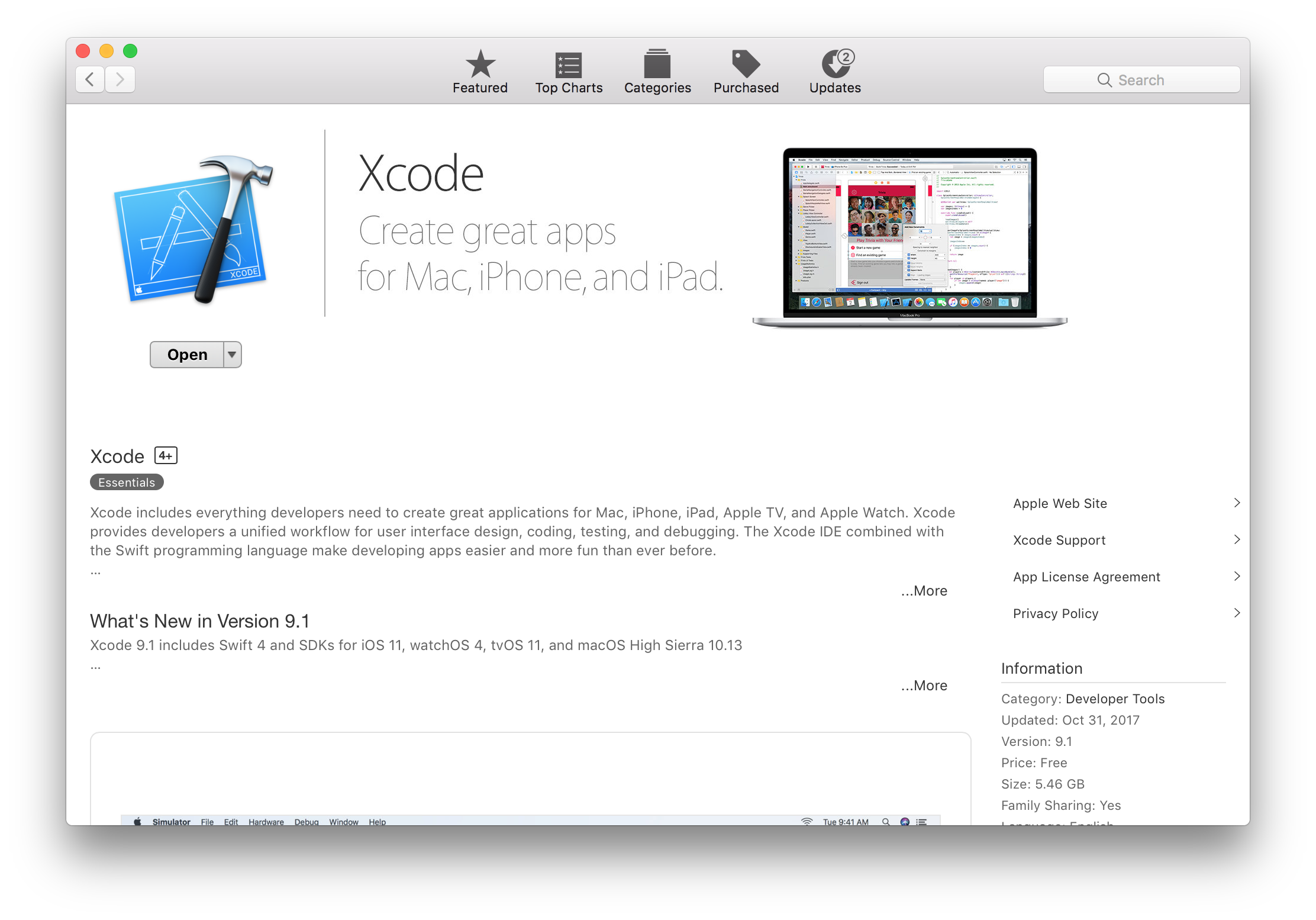- Osx Install Xcode Command Line
- Osx Install Xcode From Terminal
- Install Xcode Osx
- Osx Xcode Instruments
- Osx Xcode Install Command
There are several options for installing Git on macOS. Note that any non-source distributions are provided by third parties, and may not be up to date with the latest source release.
Sickcodes/docker-osx:latest - I want to try it out. Sickcodes/docker-osx:latest - I want to use Docker-OSX to develop/secure Apps in Xcode (sign into Xcode, Transporter) sickcodes/docker-osx:naked - I want to use Docker-OSX in CI/CD (sign into Xcode, Transporter) Create your personal image using:latest. And then pull your image out. Xcode 12 even includes a porting tool to streamline the process. The new Extensions category on the Mac App Store showcases Safari extensions, with editorial spotlights and top charts to help users discover and download great extensions from the developer community. Learn about Safari extensions. Machine Learning. Xcode includes everything developers need to create great applications for Mac, iPhone, iPad, Apple TV, and Apple Watch. Xcode provides developers a unified workflow for user interface design, coding, testing, and debugging. The Xcode IDE combined with the Swift programming language make developing. Install homebrew if you don't already have it, then: $ brew install git. Apple ships a binary package of Git with Xcode. Binary installer. Tim Harper provides an installer for Git. The latest version is 2.31.0, which was released 8 days ago, on 2021-03-16. Building from Source.
Homebrew
Install homebrew if you don't already have it, then:$ brew install git
Xcode
Apple ships a binary package of Git with Xcode.
Binary installer
Tim Harper provides an installer for Git. The latest version is 2.31.0, which was released 10 days ago, on 2021-03-16.
Building from Source
If you prefer to build from source, you can find tarballs on kernel.org. The latest version is 2.31.0.
Osx Install Xcode Command Line
Installing git-gui
If you would like to install git-gui and gitk, git's commit GUI and interactive history browser, you can do so using homebrew$ brew install git-gui
Note
Check out our guide for installing Python 3 on OS X.
Mac OS X comes with Python 2.7 out of the box.
You do not need to install or configure anything else to use Python. Having saidthat, I would strongly recommend that you install the tools and librariesdescribed in the next section before you start building Python applications forreal-world use. In particular, you should always install Setuptools, as it makesit much easier for you to install and manage other third-party Python libraries.
The version of Python that ships with OS X is great for learning, but it’s notgood for development. The version shipped with OS X may be out of date from theofficial current Python release,which is considered the stable production version.
Doing it Right¶
Let’s install a real version of Python.
Before installing Python, you’ll need to install a C compiler. The fastest wayis to install the Xcode Command Line Tools by runningxcode-select--install. You can also download the full version ofXcode from the Mac App Store, or theminimal but unofficialOSX-GCC-Installerpackage.
Note
If you already have Xcode installed, do not install OSX-GCC-Installer.In combination, the software can cause issues that are difficult todiagnose.
Note
If you perform a fresh install of Xcode, you will also need to add thecommandline tools by running xcode-select--install on the terminal.
While OS X comes with a large number of Unix utilities, those familiar withLinux systems will notice one key component missing: a decent package manager.Homebrew fills this void.
To install Homebrew, open Terminal oryour favorite OS X terminal emulator and run
The script will explain what changes it will make and prompt you before theinstallation begins.Once you’ve installed Homebrew, insert the Homebrew directory at the topof your PATH environment variable. You can do this by adding the followingline at the bottom of your ~/.profile file
Now, we can install Python 2.7:
Because python@2 is a “keg”, we need to update our PATH again, to point at our new installation:
Homebrew names the executable python2 so that you can still run the system Python via the executable python.

Setuptools & Pip¶

Osx Install Xcode From Terminal
Homebrew installs Setuptools and pip for you.
Setuptools enables you to download and install any compliant Pythonsoftware over a network (usually the Internet) with a single command(easy_install). It also enables you to add this network installationcapability to your own Python software with very little work.
pip is a tool for easily installing and managing Python packages,that is recommended over easy_install. It is superior to easy_installin several ways,and is actively maintained.
Virtual Environments¶
Install Xcode Osx
A Virtual Environment (commonly referred to as a ‘virtualenv’) is a tool to keep the dependencies required by different projectsin separate places, by creating virtual Python environments for them. It solves the“Project X depends on version 1.x but, Project Y needs 4.x” dilemma, and keepsyour global site-packages directory clean and manageable.
Osx Xcode Instruments
For example, you can work on a project which requires Django 1.10 while alsomaintaining a project which requires Django 1.8.
To start using this and see more information: Virtual Environments docs.
Osx Xcode Install Command
This page is a remixed version of another guide,which is available under the same license.
